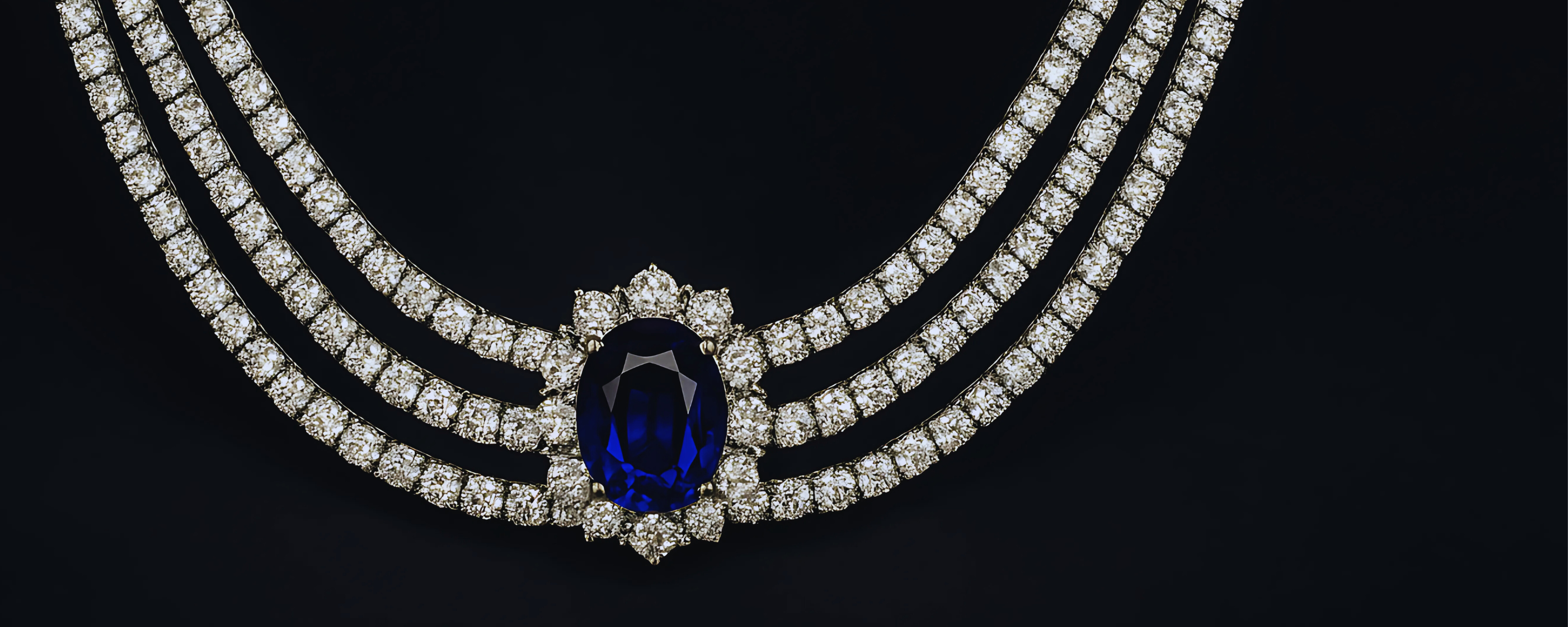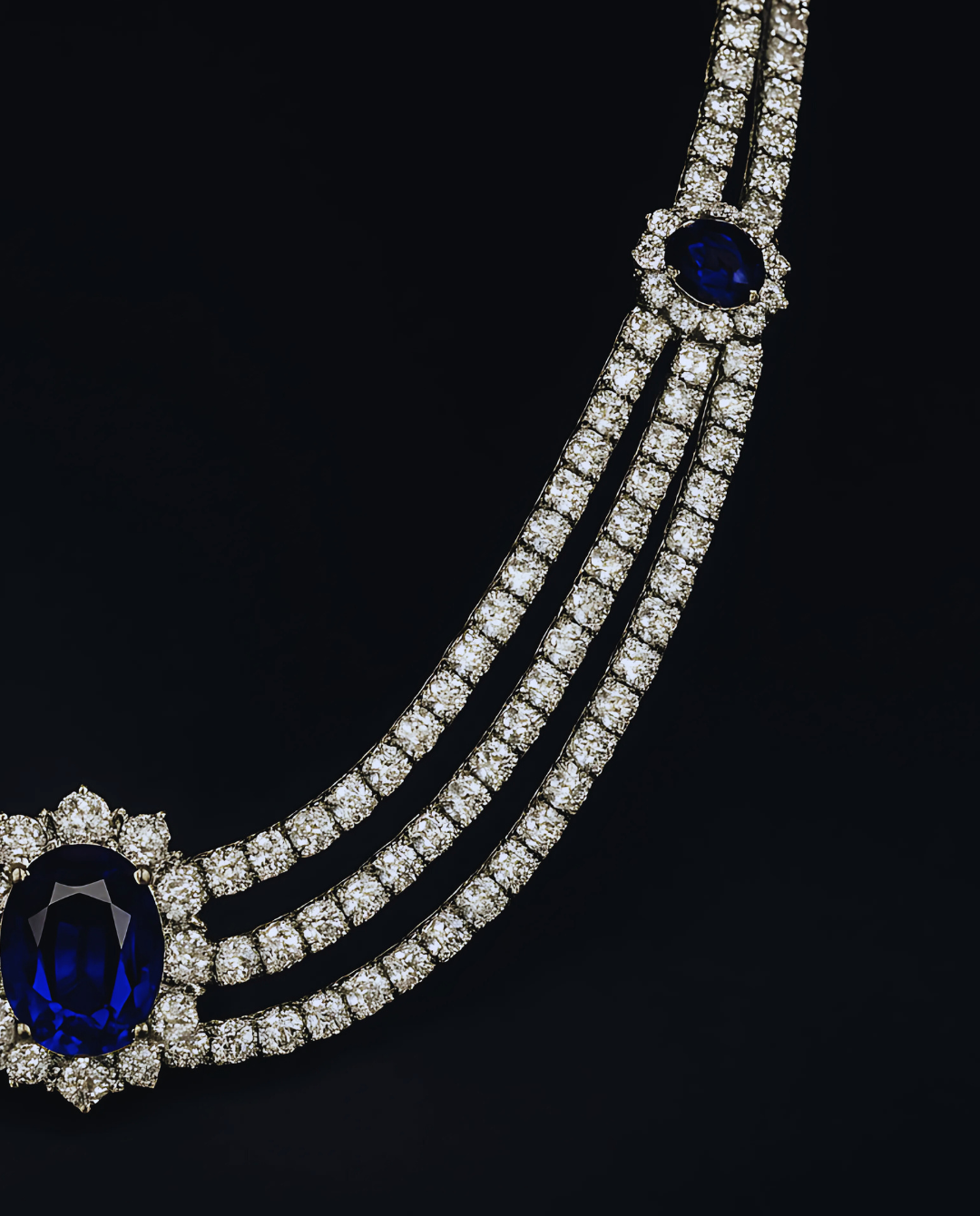
Read on - this blog is all about piercings too, including some recommendations from Svet!
So, in recent years, lab-grown diamonds and other stones have become increasingly popular for piercing. This trend has been fueled by several factors, including the increasing demand for ethically-sourced and sustainable jewellery, as well as the growing acceptance - and even preference - of lab-grown diamonds as a viable alternative to mined diamonds.
But it’s not just fine rings, bracelets and necklaces where lab-grown diamonds are making an impact – lab-grown diamonds and other lab-grown sapphires, emeralds and rubies are becoming increasingly trendy and luxurious to pierce with, thanks in part to growing concerns about the environmental and ethical impact of mined diamonds, along with the realization and growing acceptance that lab-grown luxury jewellery is the very same as any mined diamonds piercing pierce.
But enough about business and science for now… what piercing should you get? What part of your ear? Is this your first piercing… and are you nervous? Or are you a seasoned piercing vet, and looking to add more pieces to layer your look?
You have questions, we have answers! Our lead piercer and stylist Svetlana contributed to this article to help us gather general info, style tips, pain ratings per piercing type and all other sorts of fun info so you know exactly what to expect going into your first, or next, luxury piercing!

All about the most trendy luxury ear piercings, starting with the most common ear location - Lobe Piercings!
Lobe piercings have been practised by cultures all over the world for thousands of years. The ancient Egyptians are believed to have been the first to pierce their ears, viewing this accessorising as a symbol of wealth and social status.
"Lobe piercings - the soft, bottom part of the ear - are without a doubt the most popular ear piercings," says Svet, our lead piercer. "It’s very easy to heal a lobe piercing, and for that reason, in some cultures, the lobe piercing could be done even to young children or even babies."
For adults looking to change their style game and add some luxury piercing(s) to their lives? The sky is the limit on piercing jewellery options. Hoops and bars can both look great, as well as everything from lab-grown diamond pieces to those with sapphires and emeralds.
SVET RECOMMENDS:
Mini Heart Diamond Stud Earring

Halo Mini Full Diamond Stud Earring

Veto Sapphire and Diamond Large Hoop

PAIN RATING & AFTERCARE:
2 out of 10 on the piercing pain scale.
“Even though the lobe piercing will heal a lot quicker than any higher piercing on the ear, it is always advised to follow the standard steps of the healing process and clean twice a day with the aftercare lotion provided by a professional piercer. The lobe piercing fully heals for most people in 6 to 8 weeks.” - Svet
Upper Lobe Piercings
Upper ear lobe piercings are also known as "high lobe" or "cartilage" piercings, as they go through the cartilage of the ear rather than the fleshy lower lobe. In some cultures, such as those in South Asia and the Middle East, upper ear piercings are traditional and often done as part of cultural or religious practices.
SVET RECOMMENDS:
Lightning Strike Diamond Stud Earring

Halo Mini Diamond Stud Earring

PAIN RATING & AFTERCARE:
2 out of 10 on the piercing pain scale.
Helix Piercings
The upper helix piercing is a type of cartilage piercing that goes through the upper ridge of the ear, just above the lobe.
For over a year now and counting, it’s been a trending look to curate your ear by stacking piercings. Celebs ranging from Little Mix’s Perrie Edwards to Lilly Allen and Beyonce herself have been photographed sporting helix piercings.
“It’s probably the second most popular choice after lobe piercings,” says Svet. “I think it’s the easiest way to add a bit of edge and contemporary look to your everyday style.”
SVET RECOMMENDS THE SNAKEBITE LOOK - TWO SMALL "DOT" TYPE STUDS POSITIONED APART FROM EACH OTHER TO RESEMBLE TWO FANG MARKS:
Modernist Diamond Dot Stud Earring (get two for a great snakebite)

A suggestion for a single piercing:
Starburst Drop Diamond Crawler Stud Earring

PAIN RATING & AFTERCARE:
4 out of 10 on the piercing pain scale.
"Be cautious not to change the earring or downsize the bar prematurely, as the cartilage inside may appear healed but can still be damaged. Patience is essential to avoid infections from improper cleaning routines or excessive touching and movement of the earring. It's important to never leave your helix piercing without an earring, even for short periods, as the healing process will begin immediately and the hole may close up overnight." - Svet
The Flat Piercing
A flat ear piercing, also known as a "flat helix" piercing, is a type of surface piercing that is done on the flat surface of the ear cartilage.
“Ears are not twins, they’re sisters! Sometimes on one ear, someone may not have a sufficient area for a flat piercing, and if that’s the case I can advise the client on what to do instead.” - Svet
SVET RECOMMENDS:
Veto Sapphire and Diamond Crescent Stud Earring

PAIN RATING & AFTERCARE:
5 out of 10 on the piercing pain scale. Follow piercer's guidelines for aftercare!
The Conch Piercing
A conch ear piercing is a type of cartilage piercing that is done on the inner shell of the ear, in the area known as the concha. The name "conch" comes from the Latin word for "shell", referring to the curved shape of the inner ear where the piercing is located. Conch piercings can be done in two different areas: the inner conch, which is located near the centre of the ear, or the outer conch, which is closer to the edge of the ear.
"Adding a charm to your helix, conch or upper lobe hoop will achieve a super modern take on the hoop ear stack. Those who love to stand out from the crowd will love this trend." - Svet
SVET RECOMMENDS THE SNAKEBITE LOOK HERE AS WELL - TWO SMALL "DOT" TYPE STUDS POSITIONED APART FROM EACH OTHER TO RESEMBLE TWO FANG MARKS:
Halo Mini Full Diamond Stud Earring (get two for a great snakebite)

Suggestions for a single piercing:
Shooting Star Diamond Crawler Stud Earring

Modernist Diamond Pavé Hoop Earring with Charm

PAIN RATING & AFTERCARE:
4 out of 10 on the piercing pain scale. Follow piercer's guidelines for aftercare!
Tragus Piercing
A tragus piercing is a type of cartilage piercing that is done on the small, round piece of cartilage that sits in front of the ear canal. Tragus piercings have been around for centuries and were first documented in ancient cultures, including the Mayans and the Aztecs.
“The tragus piercing is considered one of the smaller ear piercings,” says Svet. “It’s recommended to choose a smaller and daintier earring rather than a larger statement piece – at least when receiving the piercing. You can swap to something larger if desired once the piercing area has healed.”
SVET RECOMMENDS:

Trillion White Sapphire Stud Earring

FOR LATER, ONCE YOUR SMALLER, DAINTIER PIERCING HEALS AND YOU CAN SWAP OUT FOR BIGGER PIECES IF DESIRED:
Veto Sapphire and Diamond Crescent Stud Earring

Modernist Diamond Pavé Hoop Earring with Charm

PAIN RATING & AFTERCARE:
4 out of 10 on the piercing pain scale. Follow piercer's guidelines for aftercare!
“Despite the myth that tragus piercings are painful, they are only associated with a pressure sensation rather than pain, due to the lack of nerve endings. After the piercing, slight swelling and soreness may occur, but this will subside after a few days. It is essential to keep the earring in place during the entire healing period, as cartilage tends to close quickly and the piercing may be lost.” - Svet



